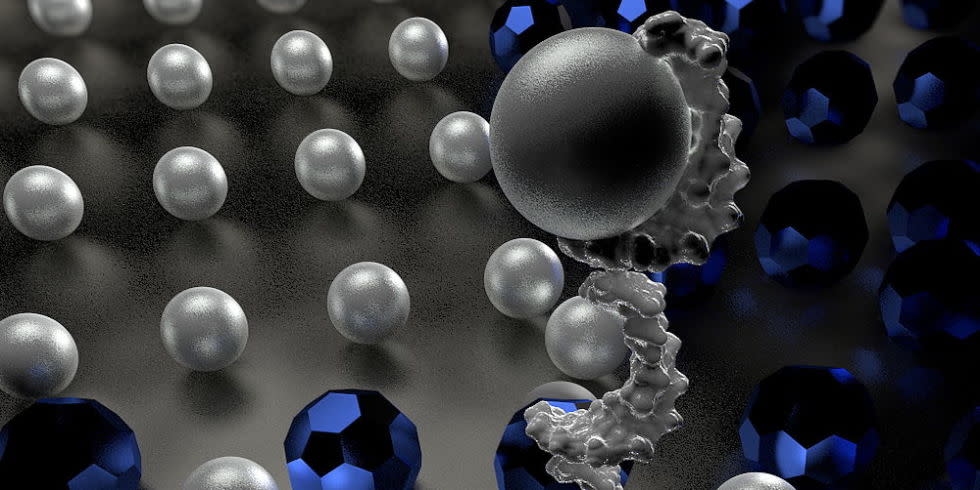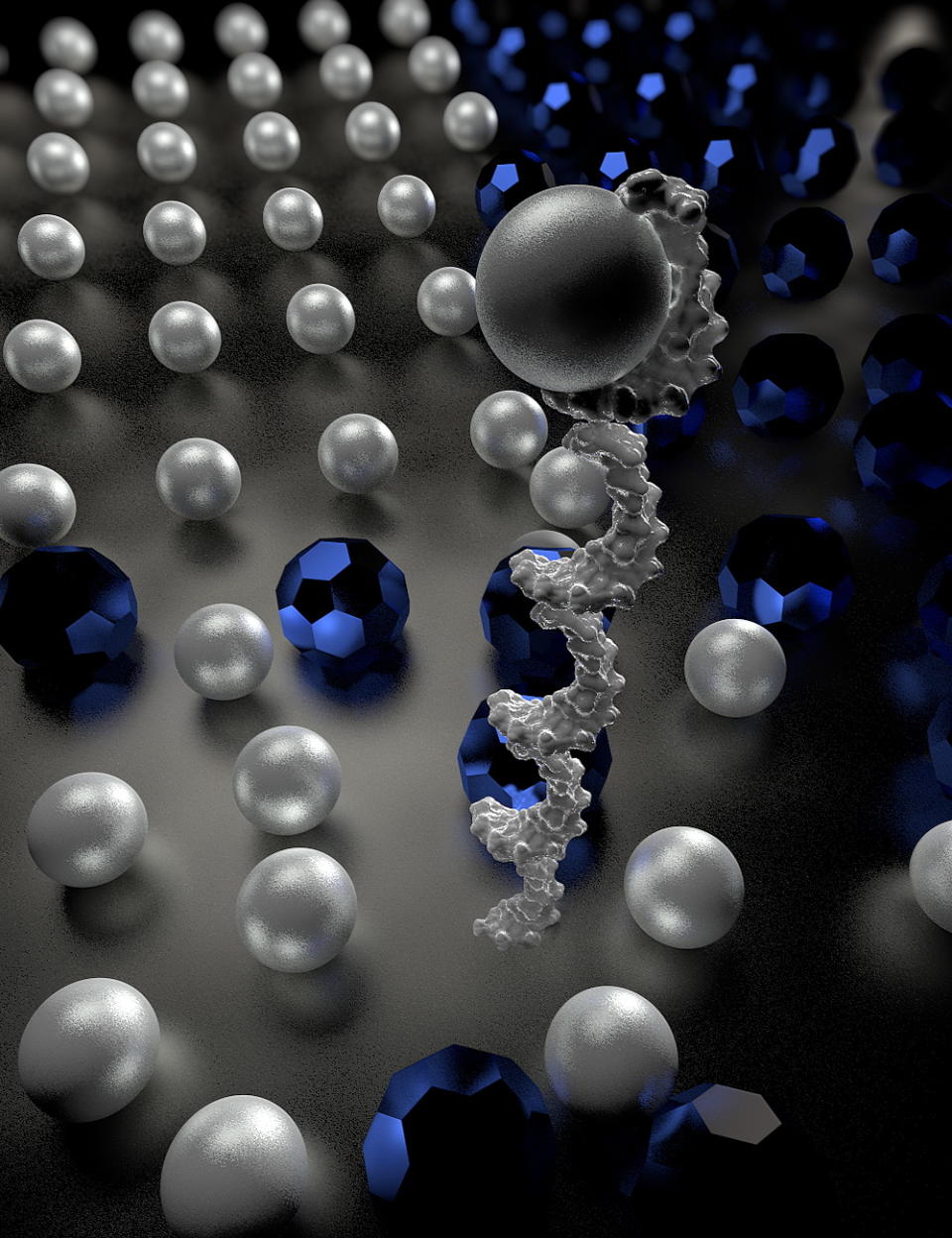Researchers Built a Microscopic Robot Out of DNA


For decades, scientists have been dreaming of one day creating tiny nanobots that can work at the microscopic scale, building things one molecule at a time or purifying our bloodstreams. While we might actually enjoy the work of those nanobots someday, for now they're still in the realm of science fiction. But a group of Caltech researchers are working to change that, by building a prototype nanobot made of DNA.
"Just like electromechanical robots are sent off to faraway places, like Mars, we would like to send molecular robots to minuscule places where humans can't go, such as the bloodstream," says researcher Lulu Qian. "Our goal was to design and build a molecular robot that could perform a sophisticated nanomechanical task: cargo sorting."

The researchers built their robot using three pieces, each individually constructed from strands of DNA. The first piece is a DNA "leg" that can move the robot around. The leg consists of two "feet" that can attach to a special surface and move the robot around. Only one foot can be attached to the surface at a time, so as soon as one foot is placed down the other one automatically lifts, giving the robot a kind of walk.
The second piece is an "arm" that can grab tiny pieces of fluorescent dye. This arm can hold those pieces and carry them around the surface. The final piece is a sensor that can recognize a specific drop-off point and signal the arm to let go. These three pieces can work together to sort different colored dye packets.
That may not sound like much, but it's an important proof of concept for these DNA robots. If they can be programmed to move dye packets around, they could be programmed to move pretty much anything around. Eventually, DNA robots like this could be used to perform all kinds of tasks.
"Though we demonstrated a robot for this specific task, the same system design can be generalized to work with dozens of types of cargos at any arbitrary initial location on the surface," says researcher Anupama Thubagere. "One could also have multiple robots performing diverse sorting tasks in parallel."
"It is my hope that other researchers could use these principles for exciting applications, such as using a DNA robot for synthesizing a therapeutic chemical from its constituent parts in an artificial molecular factory, delivering a drug only when a specific signal is given in bloodstreams or cells, or sorting molecular components in trash for recycling," says Qian.
It's our hope we can have them sooner rather than later.
You Might Also Like

